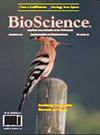Increased efficiency fertilizers in arabica coffee growth in Vale do Ribeira, SP
IF 0.5
4区 农林科学
引用次数: 0
Abstract
Controlled-release fertilizers have been increasingly used. This study aimed to evaluate and adapt new technologies applied via soil for sustainable coffee production, in order to generate information that contribute to the technical innovation of the crop for the Vale do Ribeira region. The experiment was set at UNESP, in Registro – SP. The experimental design was in randomized blocks. The experiment consisted of eight treatments with four replications, with plots of six plants. Four doses (200, 300, 400 and 500 kg ha-1) of a mixed fertilizer 20-05-20 were used, with controlled release in six months, intended for coffee trees in formation and production, compared to the dose of 500 kg ha-1 of the conventional mixed fertilizer 20-05-20, ammonium sulfate and calcium nitrate with boron, in addition to a control treatment, which did not receive NPK fertilization. The cultivar used was ‘Obatã IAC 1669’ in 3.0 x 0.6 m spacing. The following characteristics were evaluated: number of plagiotropic branches, number of nodes of plagiotropic branches, stem diameter, plant height and yield, in two harvest periods, besides the surface chemical characteristic of the soil. Increasing the dose of the slow-release fertilizer leads to greater plant growth; the coffee plant presents a highly responsive behavior to the increase in fertilizer doses in relation to nitrogen, and the use of the slow-release fertilizer Agroblen (20-05-20) 100% and ammonium sulfate + SS + KCl allows greater yield.提高肥料在 SP 省 Vale do Ribeira 阿拉比卡咖啡生长中的效率
控释肥料的使用越来越多。这项研究旨在评估和调整通过土壤施肥促进咖啡可持续生产的新技术,以便为里贝拉河谷地区的作物技术创新提供信息。实验地点位于南太平洋雷吉斯特罗的联合国教育、科学及文化组织(UNESP)。实验设计采用随机区组。实验包括八个处理,四个重复,每六株为一个小区。实验中使用了四种剂量(200、300、400 和 500 公斤/公顷-1)的 20-05-20 混合肥料,在六个月内控制释放,用于咖啡树的培育和生产,与 500 公斤/公顷-1 的传统混合肥料 20-05-20、硫酸铵和硝酸钙加硼进行比较,此外还有一个对照处理,即不施用 NPK 肥料。使用的栽培品种是 "Obatã IAC 1669",株行距为 3.0 x 0.6 米。除了土壤的表面化学特征外,还对以下特征进行了评估:两个收获期的雌雄异株分枝数、雌雄异株分枝节数、茎秆直径、株高和产量。增加缓释肥的剂量可促进植株生长;咖啡植株对氮肥剂量的增加反应灵敏,使用缓释肥 Agroblen(20-05-20)100% 和硫酸铵 + SS + 氯化钾可提高产量。
本文章由计算机程序翻译,如有差异,请以英文原文为准。
求助全文
约1分钟内获得全文
求助全文
来源期刊

Bioscience Journal
AGRICULTURE, MULTIDISCIPLINARY-AGRONOMY
CiteScore
1.10
自引率
0.00%
发文量
90
期刊介绍:
The Bioscience Journal is an interdisciplinary electronic journal that publishes scientific articles in the areas of Agricultural Sciences, Biological Sciences and Health Sciences. Its mission is to disseminate new knowledge while contributing to the development of science in the country and in the world. The journal is published in a continuous flow, in English. The opinions and concepts expressed in the published articles are the sole responsibility of their authors.
 求助内容:
求助内容: 应助结果提醒方式:
应助结果提醒方式:


